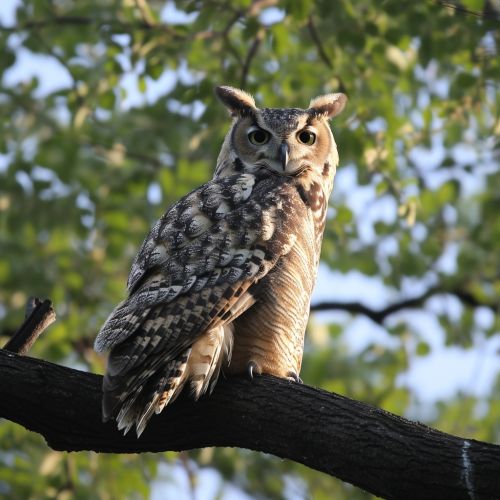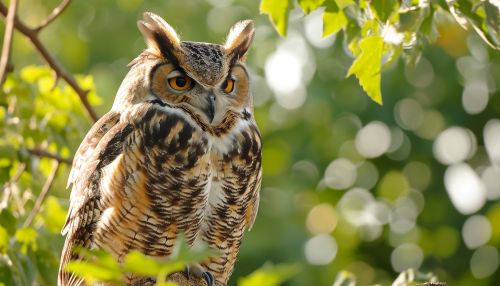Bubo
Introduction
The Bubo is a genus of birds, commonly known as the true owls, which belongs to the larger family of Strigidae. This genus comprises some of the most iconic and well-known owl species, including the Great Horned Owl (Bubo virginianus) and the Eurasian Eagle-Owl (Bubo bubo).
Taxonomy and Systematics
The genus Bubo was first described by the Swedish naturalist Carl Linnaeus in the 18th century. It is part of the family Strigidae, which encompasses most of the world's owl species. The name Bubo is Latin for owl and is a direct reference to the characteristic hooting calls of these birds.
Description
Members of the Bubo genus are typically large to very large owls, with prominent ear-tufts and powerful build. They have large, rounded heads, broad wings, and strong, sharp talons. Their plumage is often a mix of browns, greys, and whites, with varying patterns that aid in camouflage.


Distribution and Habitat
Bubo owls are found across the globe, inhabiting every continent except Antarctica. They are versatile and can adapt to a wide range of habitats, from dense forests and open grasslands to mountainous regions and even urban environments.
Behaviour and Ecology
Bubo owls are primarily nocturnal, hunting under the cover of darkness. They have exceptional hearing and sight, which they use to locate and capture prey. Their diet is varied and includes small mammals, birds, reptiles, and insects.
Conservation
While some Bubo species are widespread and relatively common, others are threatened by habitat loss, pollution, and hunting. Conservation efforts for these species often involve habitat protection, research, and public education.
